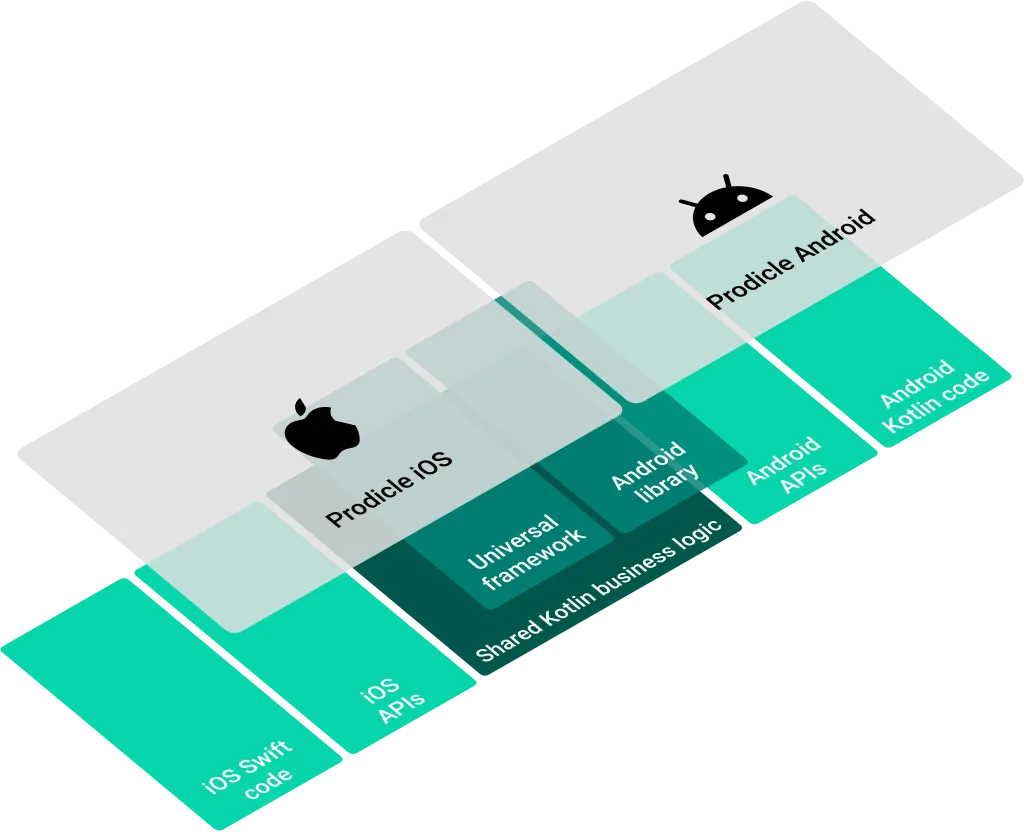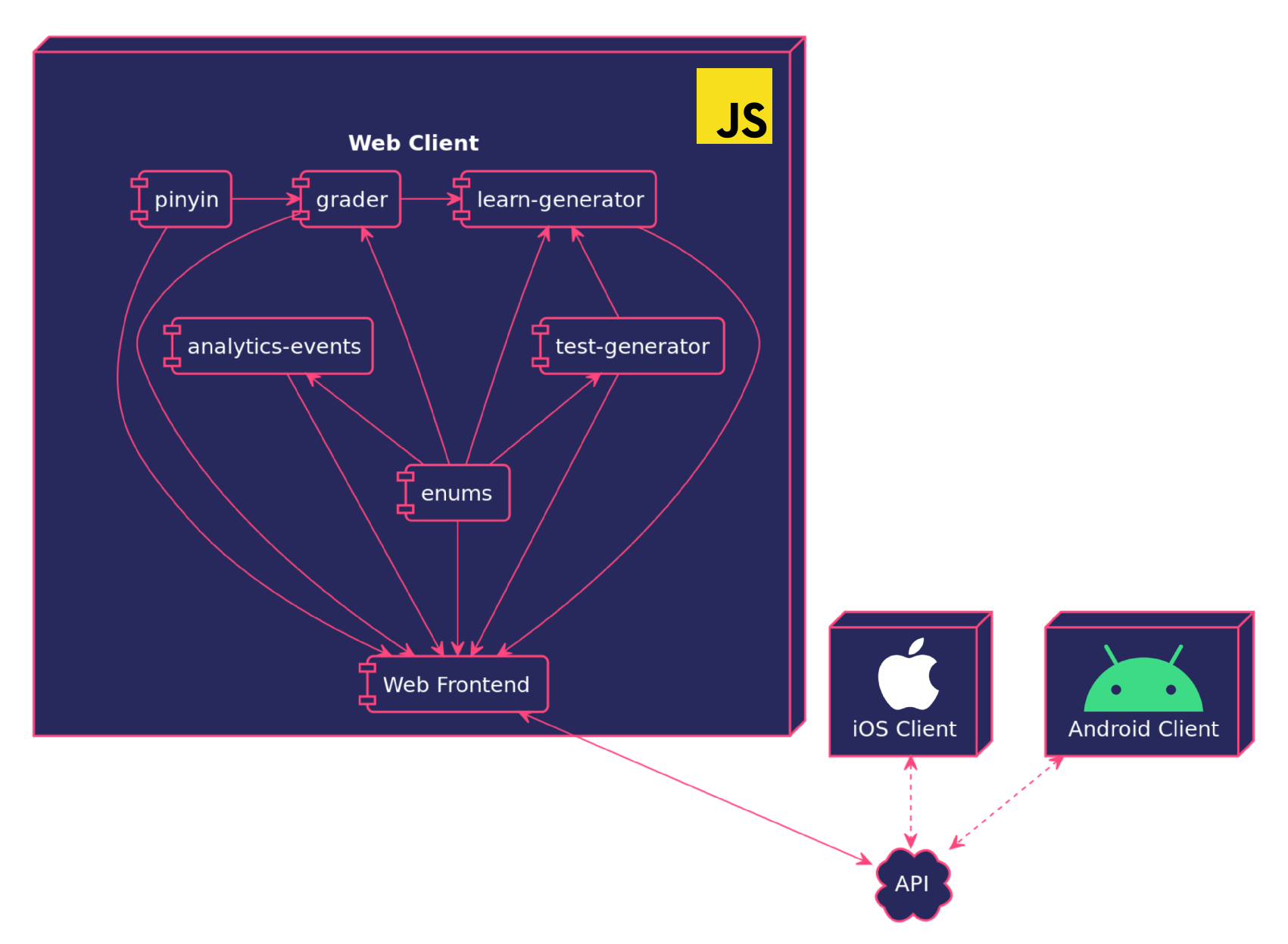Enhance Mobile Dev with KMM: Practical Integration Uses
22 January 2024Kotlin Multiplatform (KMM) is a technology that enables developers to build cross-platform applications using a single codebase. And while there are many other similar solutions on the market – the most popular are React Native or Flutter – KMM has really made its mark in this area, and the list of companies, both large and small, that have adopted it is constantly growing.
How the use of KMM affects the evolution of the mobile industry is best discussed through real-world examples. There are a whole bunch of these case studies, but from our point of view, the most important are the benefits, such as access to cameras, sensors, or other native features. For this reason, we will discuss several examples of such use cases.
However, to achieve this degree of integration, it was sometimes necessary to use KMM to perform tasks that required deep integration with device hardware or operating system functions, providing an enhanced user experience that would not be possible with a traditional cross-platform approach.
For example, Careem, a transportation services company, used KMM to upgrade its mobile application, which was particularly important regarding the high performance and reliability required for ride-ordering applications. By using KMM, they were able to make better use of mobile device features such as GPS and payment systems, resulting in faster and more accurate service for their customers.
And this is only one of many examples. Let’s look at the others in the context of some specific features!
Development efficiency
KMM integration positively affects development productivity and time-to-market for new features in mobile applications. KMM’s ability to share business logic across different platforms while still maintaining native UI code means developers can avoid rewriting the same logic multiple times, speeding the delivery process and reducing the risk of inconsistencies.
So, what does all of this mean in the real world? Plenty of benefits! Let’s have a look at them.
Since a large part of the code can be shared between the platforms, introducing new features is much faster and easier. Companies can respond more quickly to changing market demands and user needs by keeping their applications up-to-date with the latest trends and technologies.
What’s more, KMM ensures greater consistency between versions of the application that run on different devices. As a result, users experience a similar interface and functionality regardless of platform, resulting in a better user experience and higher customer satisfaction. And this translates into scalability, as companies can more easily add new features and support more users without having to rewrite all the code for each platform.
This advantage has been recognized by many companies, including Netflix, one of the world’s most popular streaming companies, which has used KMM to improve its mobile application development process. Netflix has used KMM in innovative ways, especially in the context of its Prodicle mobile app, which focuses on the physical production of TV shows and movies.
Netflix built the Hendrix lightweight mobile SDK, which was an excellent candidate for KMM because of its business logic and platform independence requirements. Importantly, using KMM did not prevent Netflix from exploring new platform-specific technologies, such as Android Jetpack Compose or Swift UI.
You can read more about what it was like to develop the application on the company’s official blog.

Unique integration capabilities in complex native tasks
KMMs can be used to perform advanced native tasks like imaging or communicating with Bluetooth devices. This is extremely important for applications that need to take advantage of advanced device features or require high performance and responsiveness, which are sometimes limited in traditional cross-platform solutions.
But what does this mean for mobile applications? For applications that require advanced image processing, such as facial recognition, graphics processing, and real-time image analysis, KMM gives developers access to powerful platform-specific libraries and APIs. This allows them to take full advantage of the device’s processing power, which is critical to the performance and responsiveness of these features.
On the other hand, for applications that require communication with external devices via Bluetooth, such as health devices, smart watches, or smart home systems, KMM provides efficient integration with native Bluetooth APIs. This provides the higher reliability and data rates essential for these kinds of apps.
A prominent example is Philips, which used KMM to develop its HealthSuite Digital Platform SDK. The purpose was to bring innovation to everyday healthcare by connecting multiple devices, collecting and analyzing data, uploading images, and hundreds of other features. At the same time, the protection of highly sensitive personal data was a fundamental issue.
This usage of KMM in mobile applications shows how the technology can be used to create advanced, efficient, and secure digital solutions in various fields, including healthcare.
Full control over performance
Another powerful benefit is complete control over application performance, regardless of the platform. This is critical for resource-intensive applications or those that need to be highly responsive and efficient, as developers can make platform-specific optimizations. And in this context, KMM has a lot to offer.
It allows developers to use common code across platforms while retaining the ability to make platform-specific optimizations. In addition, the system provides access to each platform’s native libraries and APIs, allowing full use of platform-specific features, including performance optimizations. As a result, applications can run more smoothly, quickly, and responsively, which is critical for applications that require rapid response, such as games, video editing applications, and advanced analytics tools.
The easiest way to see this is through an example. And again, KMM can demonstrate a specific case study, such as Quizlet – a popular educational platform with tens of millions of users using the app each month.
For an educational application as large as Quizlet, speed and performance are critical. KMM allows developers to utilize the native features of each platform, which translates into application efficiency and responsiveness.
It’s interesting to mention that Quizlet had relatively humble beginnings as a simple desktop flashcard learning platform. However, in response to growing popularity and user requirements, the developers had to step out of their comfort zone, including rewriting the KMM code. Before that, however, the developers approached other solutions – unfortunately, even the market leaders (React Native) could not meet the specific requirements. Only KMM proved to be the answer to the burning problems.
The full story of Quizlet’s integration with KMM is described on their website.

Source: https://quizlet.com/blog/shared-code-kotlin-multiplatform
Rapid implementation of updates
The Quizlet case illustrates the importance of responding to user requirements, and KMM allows updates and patches to be deployed quickly across both platforms, which is especially important for bug fixes. KMM’s structure allows for efficient propagation of updates and patches across platforms, ensuring consistent performance and functionality.
Because KMM allows a significant part of the code to be shared between the Android and iOS platforms, updates and fixes can be implemented faster. If a bug is found in a shared piece of code, it only needs to be fixed once, and the change is automatically applied to both platforms.
Significantly, by reducing the number of sources to manage, KMM dramatically simplifies the process of testing and deploying updates, thereby reducing the number of bugs in the first place. This, in turn, reduces the risk of introducing new bugs during upgrades.
This makes KMM an attractive choice for developers and businesses looking for efficient mobile application development solutions.
Benefits of integrating KMM with native technologies
The above list is not exhaustive but shows a spectrum of possibilities. The mentioned case studies show that for each developer, something different will be most important because usability customized for the specific application is the key, just like in the case of Quizlet, which tried several solutions before finding the best set in KMM.
For some developers, the most important benefits will be increased programming efficiency and better performance control, while for others, the most crucial thing will be better access to the device’s features. And while KMM is a perfect solution, it is worth remembering that others on the market may work even better in a given case. However, a case-by-case approach and evaluation is needed.
It is also worth considering what the future will bring as mobile technology evolves. Among other things, this evolution has shown that the long-time leader, React Native, is slowly losing ground to other solutions. KMM, on the other hand, is well-positioned to adapt due to its design philosophy, ensuring that developers can continue to take advantage of the platform’s latest features and technological advances.
Do you need to find the right application development technology for a specific case? Talk to us, and we will help you!




